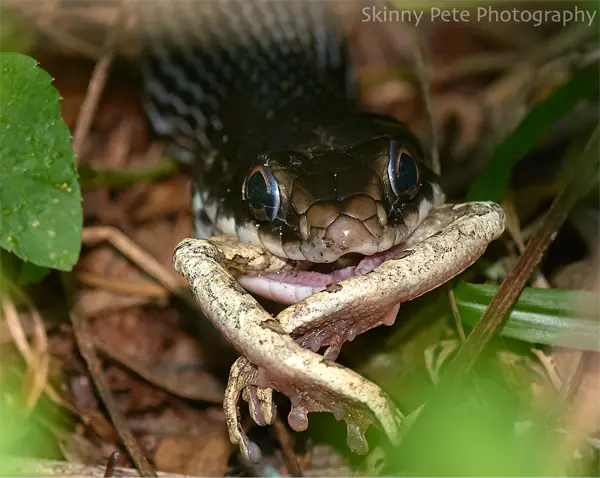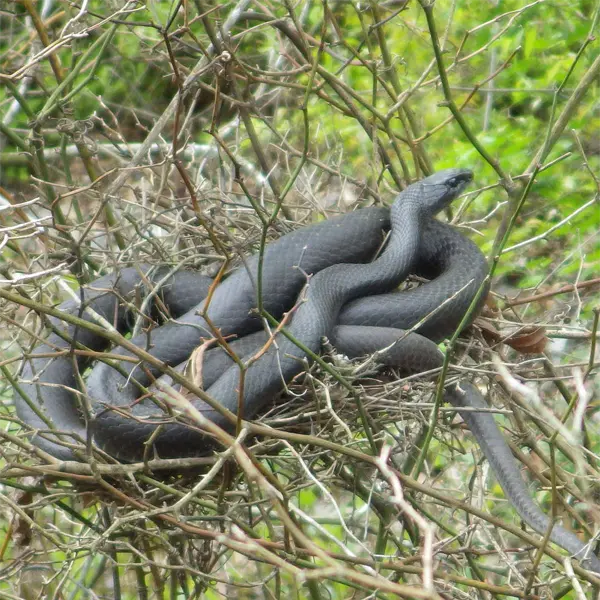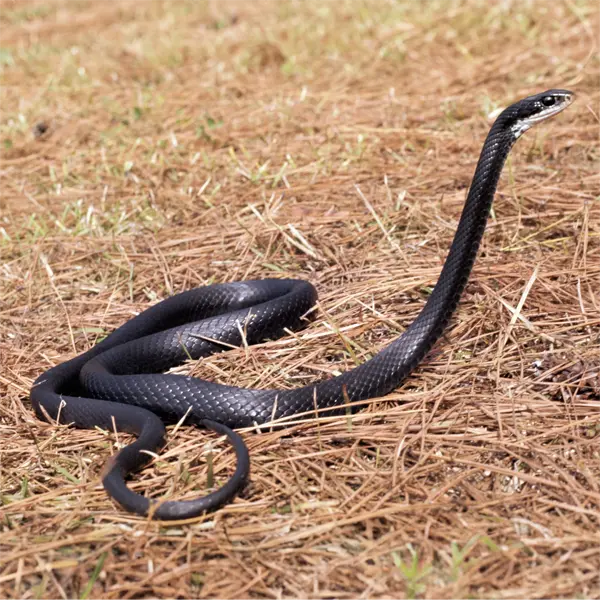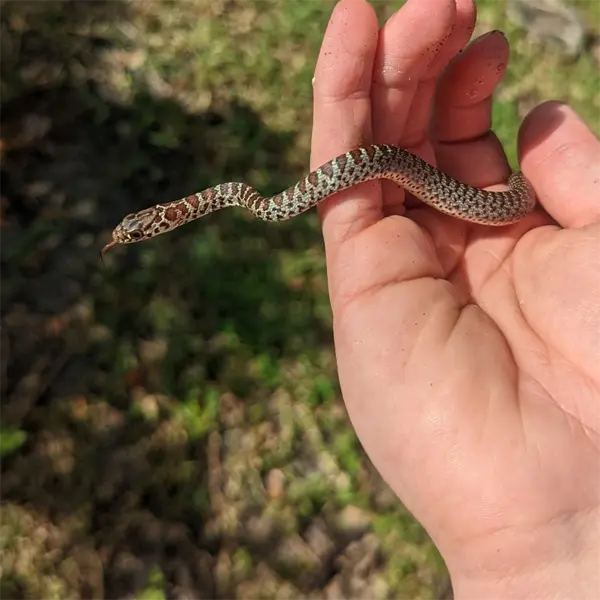North American Racer
- Scientific Name
- Coluber constrictor
- Also Known As
- Black Racer, Eastern Racer, Yellow-bellied Racer
- Range
- All of Florida
- Diet
- Small Rodents, Birds, Amphibians
- Life Expectancy
- 6 Years
Quick Links
North American Racers in Central Florida
The North American racer (Coluber constrictor) is a slender, agile species of nonvenomous colubrid snake found throughout central Florida. Often confused with similar-looking snakes, racers can be identified by key physical and behavioral characteristics. This comprehensive guide provides detailed identification tips, biology facts, and prevention methods for North American racers in central Florida. Read on to learn racer habits, reproduction, diet, health risks, signs of activity, and professional removal options if you encounter these snakes on your property.
Appearance and Identification
North American racers can be distinguished from other snakes by their slender build, large eyes, and distinctive color patterns
Racers have smooth dorsal scales and a pointy snout that distinguishes them from other harmless species like rat snakes, kingsnakes, and corn snakes. Their slender build and enlarged head for swallowing prey whole are key identifying features.
Maturation Rate
Young racers grow quickly, reaching sexual maturity by 2-3 years old. They mate in the spring following their second winter. North American racers have indeterminate growth, meaning they continue growing slowly throughout life. Most growth occurs during the first 3 years until maturation.
Habits and Behavior
North American racers are active during the day (diurnal) in warmer months but may become crepuscular in hot weather. They prefer open habitats like fields, prairies, and marsh edges over dense forest. Racers are quick to flee if approached, giving them their name. They can reach speeds up to 18 mph when evading threats.
Racers are highly territorial, using visual and chemical cues to recognize their home range. Males engage in combat dances of coiled posturing to defend territories. If picked up, racers may emit a foul musk, bite, and defecate to get free. Their defensive display consists of flattening coils, hissing, and vibrating the tail.
Despite their speedy nature, racers rarely bite in defense. They utilize camouflage and rapid escape to avoid confrontation. Bites typically only occur while handling the snake. Their enlarged head allows them to swallow eggs whole, aided by mild backward-curving teeth.
Reproduction and Lifespan
Mating occurs in the spring after emerging from brumation. Males engage in breeding balls where one female is courted by multiple males. Females lay clutches of 5-30 eggs in loose soil or rotting wood. The white, leathery eggs measure 1-1.4 inches (2.5-3.5 cm) long.
Incubation lasts 9-10 weeks before the 6-13 inch hatchlings emerge. North American racers can live up to 6 years in the wild. Their rapid speed aids in evading predators like hawks, coyotes, and bobcats.
Ideal Habitat and Range
The warm, humid climate of central Florida provides ideal habitat for North American racers. Average temperatures in the region range from the 60s°F (15-20°C) in winter to over 90°F (32°C) in summer. Annual rainfall exceeds 50 inches.
These conditions allow dense vegetation like palmetto scrub, longleaf pine, cypress swamps, and wet prairies to thrive. Rural farms, ranches, and citrus groves provide ample prey. Racers inhabit open fields, forest edges, and wetlands throughout the region.
Developed areas also provide shelter in debris, woodpiles, and crawlspaces. As diurnal snakes, racers actively forage during the day when warmer weather rouses prey like lizards, rodents, and nestling birds. Central Florida’s abundant small animal populations and loose, moist soils for laying eggs allow racers to flourish.
Diet and Feeding
North American racers are carnivorous snakes that consume small vertebrates and eggs. They are opportunistic foragers that eat any appropriately sized prey. Their diet consists primarily of:
- Small rodents – mice, rats, voles, squirrels
- Birds – eggs and nestlings
- Amphibians – frogs, salamanders
- Reptiles – lizards, smaller snakes
- Invertebrates – caterpillars, grasshoppers
Racers locate prey while actively foraging during the day. They rely on excellent eyesight and a flickering tongue to detect chemical cues. Prey is constricted using body coils and swallowed whole head first. Food passes through the digestive tract within 1-2 days before racers seek their next meal.

Photo 208594524 © Peter May, CC BY-NC

Common Health Risks
While not venomous, North American racers can bite in self-defense if threatened. Their enlarged rear teeth and strong jaw muscles make racers capable of inflicting painful, bloody bites. Potential injuries include:
- Lacerations from teeth cutting the skin.
- Bruising around the bite site.
- Risk of infection from bacteria in snake’s mouth.
- Permanent muscle or tendon damage from a severe bite.
However, most racer bites are ‘dry’ without envenomation. Thorough cleaning and antibiotics prevent infection. Bites occur infrequently given the snake’s tendency to flee from threats. If encountered, give racers ample space and don’t attempt to handle or harm them.
Preventing North American Racers
The main precaution is to avoid handling wild racers. If you encounter one on your property, allow the snake to retreat unharmed or use gentle water spray to encourage it to leave. Promoting natural predators like hawks and opossums can reduce racer numbers.
Trim vegetation to reduce hiding spots around the home. Seal foundation cracks, install mesh screens in vents, and keep crawlspaces and attics clean to avoid attracting rodents as prey. Traps and relocation of nuisance snakes may be warranted if racers regularly enter enclosed, populated areas. Otherwise, peaceful coexistence is recommended with this timid species.
North American Racers in Central Florida – Conclusion
North American racers are common, naturally occurring snakes that play an important role as predators. They pose very little risk to people and pets due to their tendency to flee from threats. A bite is unlikely unless intentionally handled. With basic precautions, racers around homes can be safely tolerated or gently encouraged to relocate away from high traffic areas. Exclusionary methods and reducing rodent prey will further discourage their presence.







